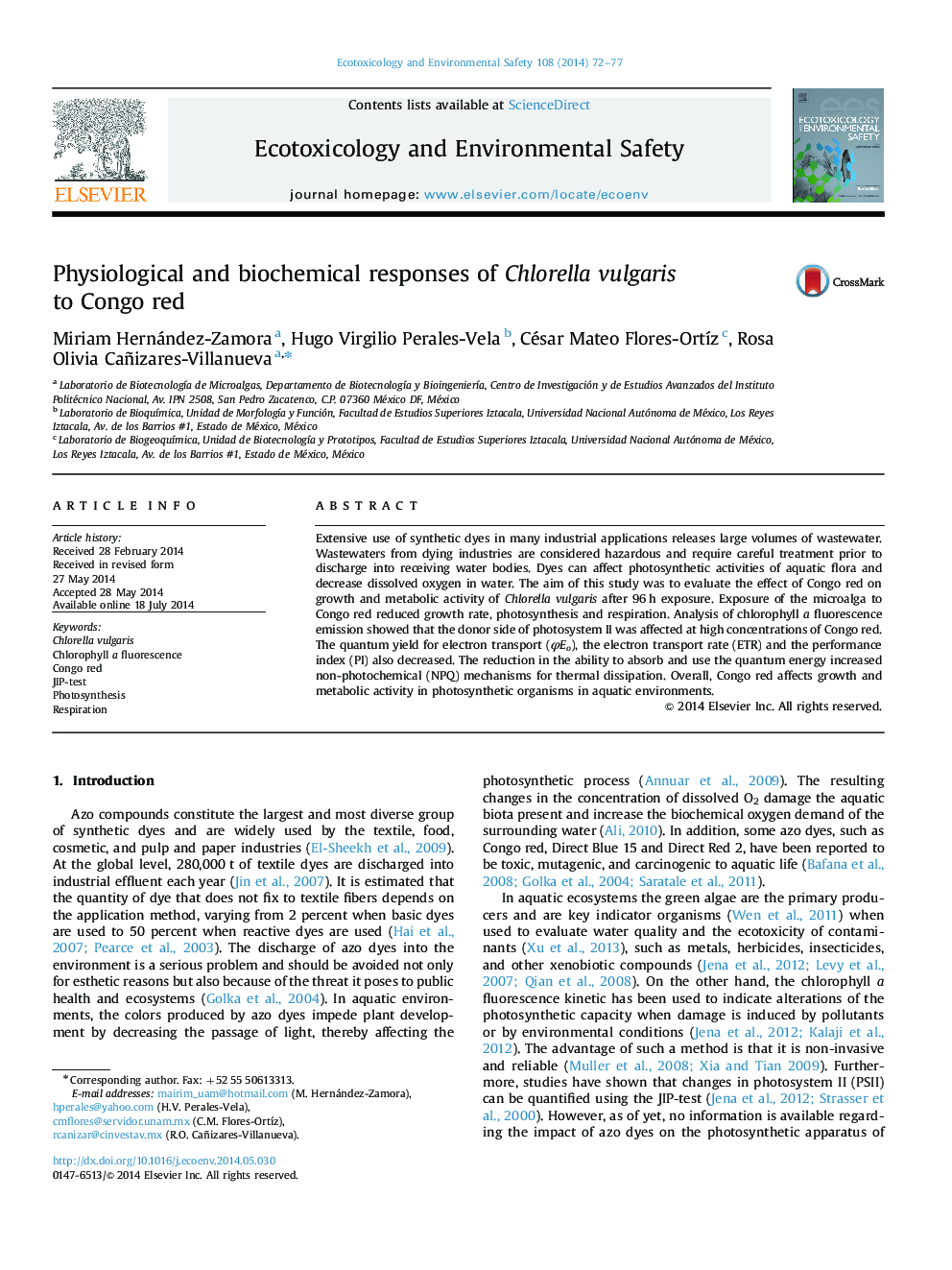| Article ID | Journal | Published Year | Pages | File Type |
|---|---|---|---|---|
| 4420081 | Ecotoxicology and Environmental Safety | 2014 | 6 Pages |
•Algal growth was related to the rate of Congo red utilization.•Chlorophyll a fluorescence was affected by Congo red concentrations (5–25 mg L−1).•Congo red reduced electron transport (ETR) and inhibited metabolic rate (photosynthesis and respiration) in Chlorella vulgaris.
Extensive use of synthetic dyes in many industrial applications releases large volumes of wastewater. Wastewaters from dying industries are considered hazardous and require careful treatment prior to discharge into receiving water bodies. Dyes can affect photosynthetic activities of aquatic flora and decrease dissolved oxygen in water. The aim of this study was to evaluate the effect of Congo red on growth and metabolic activity of Chlorella vulgaris after 96 h exposure. Exposure of the microalga to Congo red reduced growth rate, photosynthesis and respiration. Analysis of chlorophyll a fluorescence emission showed that the donor side of photosystem II was affected at high concentrations of Congo red. The quantum yield for electron transport (φEo), the electron transport rate (ETR) and the performance index (PI) also decreased. The reduction in the ability to absorb and use the quantum energy increased non-photochemical (NPQ) mechanisms for thermal dissipation. Overall, Congo red affects growth and metabolic activity in photosynthetic organisms in aquatic environments.
